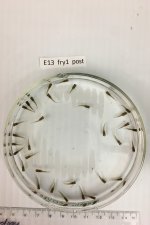
Comparing recently mated and stored sperm derived broods in the sailfin molly Poecilia latipinna
Alena Arnold ’23
Major: Biology (Zoology)
Hometown: Jeromesville, Ohio
A.J. Lashway ’23
Major: Zoology
Hometown: Niskayuna, New York
Alyssa Baxter ’22
Major: Zoology
Hometown: Powell, Ohio
Katherine Walter ’23
Major: Pre-Professional Zoology
Hometown: Covington, Washington
Makenna Juergens ’23
Major: Pre-Professional Zoology
Hometown: Springfield, Ohio
Alax Crawford ’21
Major: Biology (Zoology)
Hometown: South Lyon, Michigan
Faculty Mentor: Shala Hankison
Many animal species use sperm storage as a way to increase their reproductive fitness by allowing them to produce offspring even in the absence of a mate. However, sperm storage may have its own trade-offs. Our research used sailfin mollies, Poecilia latipinna, to determine any differences between broods produced by recently mated female mollies and broods produced as a result of sperm storage. We found that recently mated females tended to produce larger broods (more offspring) than females that used sperm storage. This finding indicates that sperm storage might require females to allocate more resources to the offspring.



